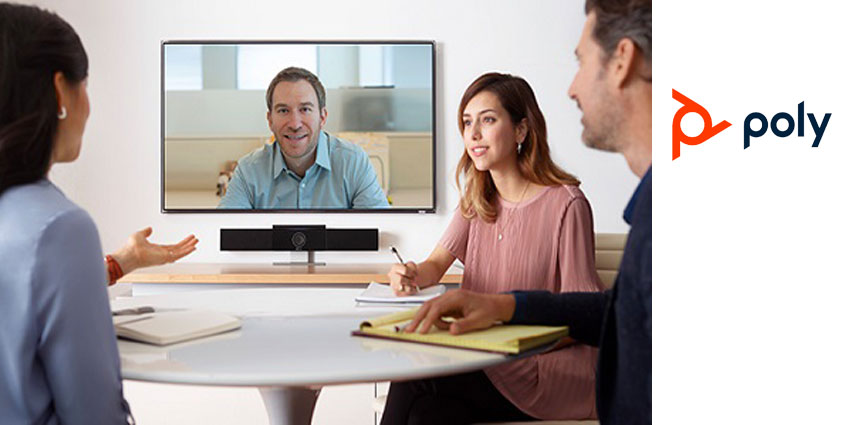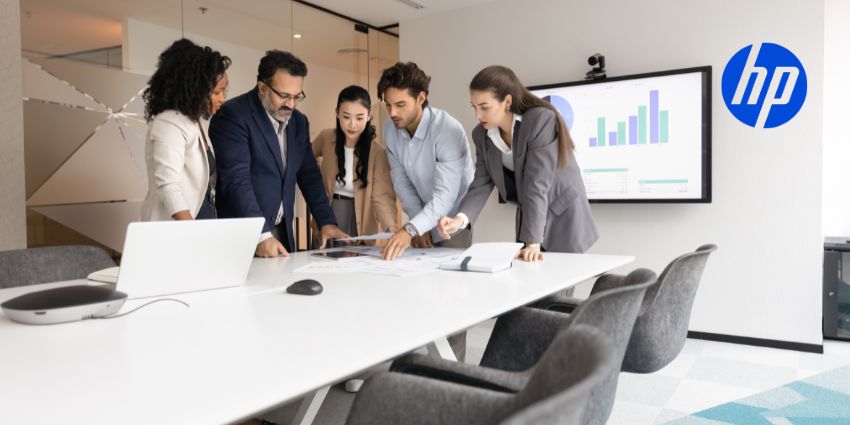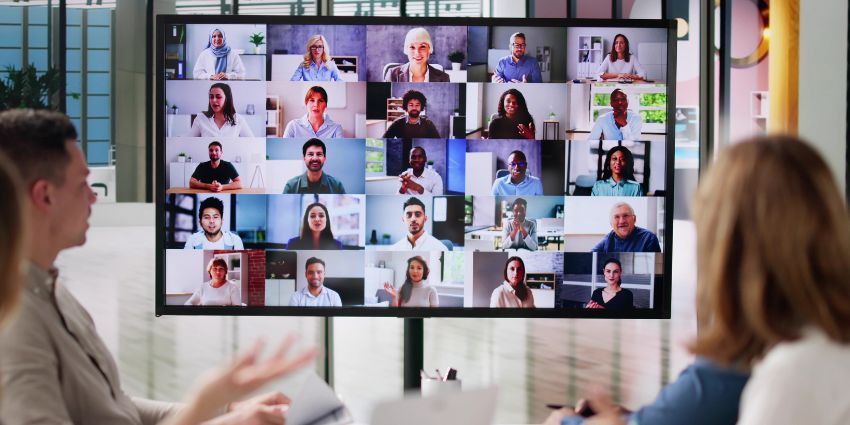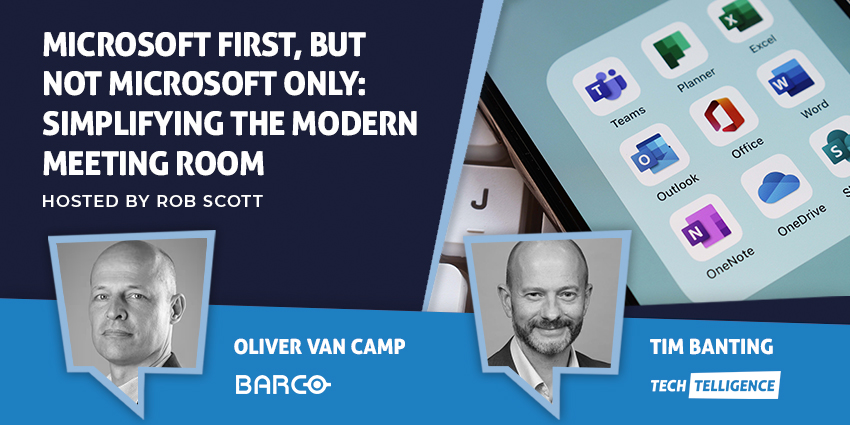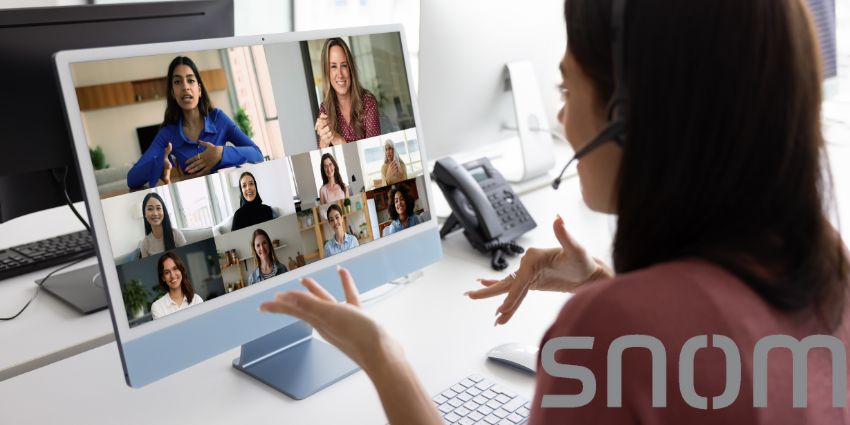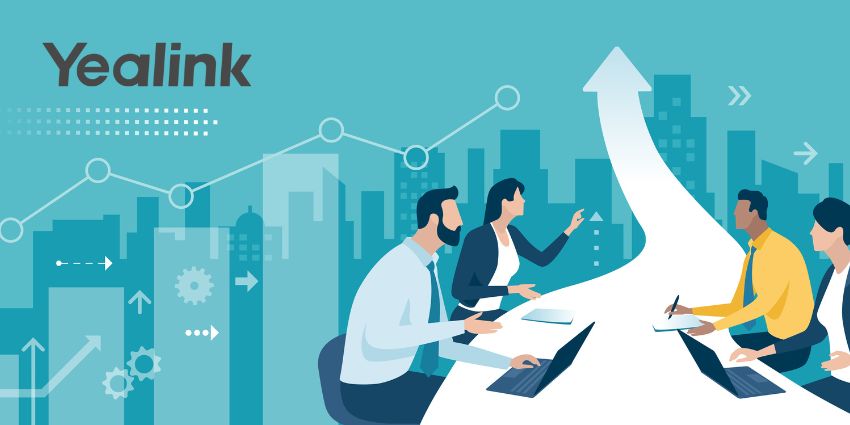As technology evolves and the world becomes increasingly mobile, the way that teams work together is changing. The modern workforce is rarely built on the same 9-to-5 schedule and cubicle-filled office that we used to know. Instead, work is becoming an increasingly flexible experience.
One of the features of the modern workplace is the huddle room – small meeting spaces where team members can come together to host conferences without a massive or expensive boardroom. Although these environments are growing more popular, there are still challenges that businesses need to address to ensure that they’re creating the right huddle rooms for their teams.
As one of the leading providers of global communication and collaboration solutions, Poly is an innovator in the huddle room space. I caught up with the Regional Product Marketing Manager for EMEA of Poly, Jonathan Clark, to talk about the future of huddles.
What Kind of Challenges do Businesses Face with Huddle Rooms?

Huddle rooms are designed to be simple and accessible. However, creating these spaces in a way that drives adoption and productivity isn’t always easy. Large businesses often have dozens, if not hundreds of huddle rooms to manage at once. Since Jonathan himself has been involved with creating various huddle spaces, I asked for his thoughts on the challenges that face today’s companies.
“A lot of huddle rooms use bring-your-own and DIY solutions. However, large organisations generally have meetings with people who expect a certain level of quality. Essentially, to give people simplicity and functionality, you need something that combines high-quality video and audio with plug-and-play capabilities.”
Poly’s huddle room solutions are designed to put usability first, without compromising on features. The high-quality experience, complete with noise block and acoustic fencing is the kind of thing that businesses would typically expect to see in the large enterprise meeting room. Poly ensures that these offerings are available in any environment.
How is Poly Getting Rid of Challenges for today’s Companies?
Poly isn’t just giving people more simplicity when it comes to accessing the huddle room; the company is also making it easier for people to work productively wherever they are.
“It’s about making communication and collaboration as easy as possible”
Today, employees are quickly discovering that the open office isn’t the holy grail that it was promised to be. “Companies assumed that breaking down walls would also eliminate the silos between teams. However, most people are private by nature. They like their personal spaces. Open plan isn’t delivering what it was meant to – it’s just leaving 99% of people distracted.”
Along with the open office formatting in today’s offices, companies are also investing in smaller spaces for their workers. The rise of remote working means that the people left in the office are often squeezing into smaller spaces. This means that companies need even more ways to eliminate distractions. “People need handsets that give them an acoustic tent where they can escape from the noise of the office. They need headsets that help them to concentrate and eliminate background sound. We’re investing in tools that eliminate the distractions of the changing workplace.”
How Can Huddle Room Tools Make Offices Less Chaotic?
According to Jonathan, people need the freedom to be able to choose the tools and working styles that work for them. That’s something that Poly tries to support with their range of meeting and huddle room solutions.
“Technology plays an important part in the modern workplace, but it’s meant to sit in the background. We want to provide the technology then step away.”
“People should be able to rely on Poly to just work – without them having to think about it. That way, they can forget about the tech and get on with the interaction”
By designing tools that just “disappear into the background”, Poly is supporting a range of working environments. The company is even looking for ways to help the changing demands for work/life balance too, by providing solutions that people can use for both personal and business purposes. “People using Elara can be just working on their smartphone, then they can pop their phone into the system and access everything they need instantly. All their contacts, their Microsoft Teams workspaces and everything they need will just be there to access.”
What Advice Can You Give for Huddle Room Design?
I asked Jonathan to leave us with some words of wisdom on huddle room design.
He told me, first of all, that Poly is focusing on ecosystems and partners to make sure that there are as few silos in the workplace as possible. “We’re not building a bunch of islands with providers. We’re making sure that teams can use the devices that they want easily – without any frustration. You can walk into a meeting room with a Poly Trio device and launch a meeting from Zoom, BlueJeans, Microsoft Teams, or whatever. Everyone can communicate with everyone.”
That simplicity and integration is essential to Poly, and it’s a crucial part of where they think the huddle room of the future is heading. People need to be able to access the same excellent features, as well as reliable audio and video quality – no matter their meeting room or environment.
“Anyone planning a huddle room today just needs to keep it simple, keep it interoperable, and keep it flexible”
